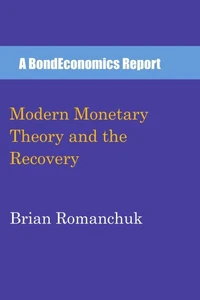This book looks at the theory of recessions from a (mainly) post-Keynesian perspective. What are the mechanisms behind recessions, and what do various theories or models predict? This volume is what might be described as a "guided survey": there is a theoretical narrative, but it is developed by surveying existing theories. The writing style is at an intermediate level, being at about the same complexity as what might be seen in the business press, but with a large body of footnotes/endnotes to point readers to academic papers. The main theoretical argument is that recessions are inherently hard to forecast.
Anyone who has read financial market commentary for an extended period will not be surprised by this; missed recession calls are a pervasive phenomenon. The interesting question is: why are recessions hard to forecast? The mechanisms outlined in this book help explain why theory suggests that this should be so. The second volume continues the argument with more advanced topics, as well as doing a survey that compares competing theories to historical recessions.
This book looks at the theory of recessions from a (mainly) post-Keynesian perspective. What are the mechanisms behind recessions, and what do various theories or models predict? This volume is what might be described as a "guided survey": there is a theoretical narrative, but it is developed by surveying existing theories. The writing style is at an intermediate level, being at about the same complexity as what might be seen in the business press, but with a large body of footnotes/endnotes to point readers to academic papers. The main theoretical argument is that recessions are inherently hard to forecast.
Anyone who has read financial market commentary for an extended period will not be surprised by this; missed recession calls are a pervasive phenomenon. The interesting question is: why are recessions hard to forecast? The mechanisms outlined in this book help explain why theory suggests that this should be so. The second volume continues the argument with more advanced topics, as well as doing a survey that compares competing theories to historical recessions.

 , qui est-ce ?
, qui est-ce ?